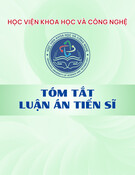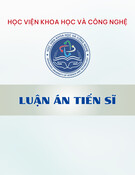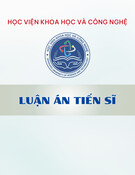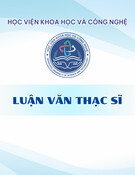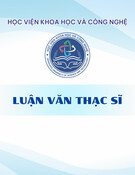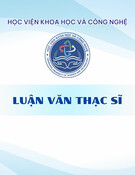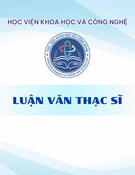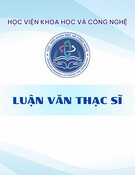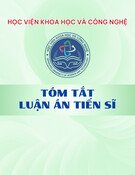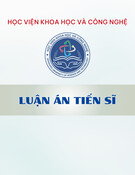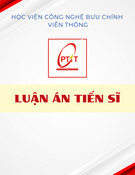
2
3. Research content
Content 1: Overview of the current status of pig wastewater pollution and
the treatment technologies; overview of Eco-tech using aquatic plants in
wastewater treatment in general, including waste water from pig farms.
Content 2: Evaluate the tolerance of some selected aquatic plants to COD,
NH4+, NO3-, pH, and their ability to treat COD, nitrogen, phosphorus in pig
wastewater after microbial treatment.
Content 3: Evaluate the efficiency of the treatment in different technological
types using aquatic plants with different wastewater loads.
Content 4: Establish and evaluate the treatment efficiency of the aquatic
plant system in reducing nitrogen (N), phosphorus (P) and organic matters
from pig farm wastewater after the microbial treatment.
4. Novel contributions of the study
- Selection of suitable aquatic plants for pig wastewater treatment
after microbial process based on the efficiency of COD, N, P removal.
- Selection of the suitable Eco-tech type using aquatic plants to treat
swine wastewater.
- Integration of the selected Eco-tech type into a treatment system of
30 m3 per day- night, effectively additional treating COD, N and P in
effluent from pig farms with low cost, simple operation, potential
enlargement and adaptation for farm conditions of Vietnam.
5. Thesis structure
The thesis is presented in 131 pages with 25 tables, 54 figures, and
166 references, including: 3-page introduction, 41-page literature review,
11-page experimental and research methods, 74-page result and discussion,
2-page conclusion and recommendation.
CONTENTS OF THE THESIS
Chapter 1: Literature overview
1.1 The situation of pig farm
Livestock farming is the development orientation of the stock-raising
sector. According to statistic number stated in 2016, there have been total
29 millions pigs in Vietnam, in which the Red River Delta reaches the
largest number with 7.4 million pigs (~26%), and this number has been
increasing over the years. This quick development, however, leads to many
problems to our environment caused by the increasing livestock waste.
1.2. Survey results of waste from pig farming and treatment technology
1.2.1. Environmental pollution caused by pig farming
A total of 20 pig farms were surveyed in five provinces: Hanoi, Vinh
Phuc, Hung Yen, Thai Binh and Hoa Binh. Water consumption in the farms
differs significantly from one to another, varying from 15 to 60






